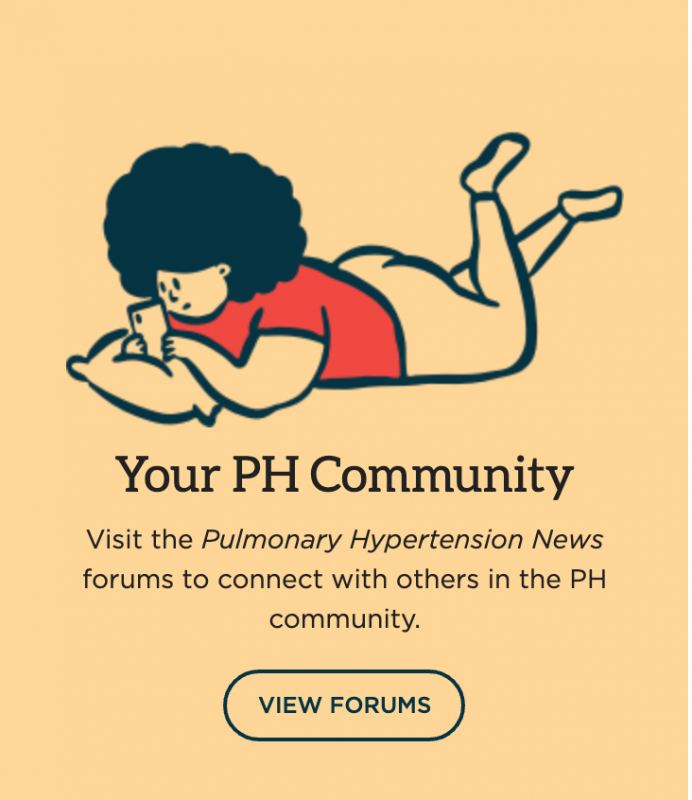Yutrepia beefs up exercise capacity in adults with PH-ILD in trial
Over 550 patients started on therapy since its May approval in US

Yutrepia (inhaled treprostinil), an inhaled dry powder formulation of treprostinil for pulmonary arterial hypertension (PAH) and pulmonary hypertension (PH) associated with interstitial lung disease (PH-ILD), has been prescribed to more than 900 people with PAH and PH-ILD since its approval in the U.S. in May, according to its developer Liquidia.
Overall, more than 550 patients have started treatment through the first week of August, Liquidia stated in a company press release that provided a corporate update for April through June.
“The second quarter was a defining period for Liquidia with the FDA approval and rapid commercial launch of Yutrepia (treprostinil) inhalation powder,” said Roger Jeffs, PhD, Liquidia’s CEO.
Additionally, interim results from the observational ASCENT trial (NCT06129240) demonstrated that the treatment improved exercise capacity in adults with PH-ILD. In results presented by Liquidia, the company reported that more than 350 physicians have already prescribed the medication to patients.
“We have continued to build differentiated clinical evidence of Yutrepia’s safety and efficacy to treat PH-ILD through the ongoing, open-label ASCENT study, which fully enrolled last March,” Jeffs said. “More detailed clinical findings will be presented at medical conferences in September and October.”
PH is characterized by high pressure, or hypertension, in the pulmonary arteries, the blood vessels that supply the lungs. In PAH, the narrowing of pulmonary arteries restricts blood flow across the lungs, making the heart work harder to pump blood through them. PH-ILD is associated with inflammation and scarring in the lungs.
ASCENT testing Yutrepia effect on 6-minute walk distance
Yutrepia is a formulation of treprostinil, a medication that mimics the activity of prostacyclin, a naturally occurring hormone that causes blood vessels to relax and widen, thus reducing blood pressure.
The treatment was developed to improve treprostinil’s delivery to the lungs through an easy-to-use and low-effort inhalation device. It’s indicated in the U.S. to improve exercise capacity in people with PAH and PH-ILD. Its approval was based on two Phase 3 trials of Tyvaso, an inhaled treprostinil solution formulation, and the INSPIRE Phase 3 trial (NCT03399604), which enrolled adults with PAH.
The robust and increasing uptake [of Yutrepia] reflects a clear need for more flexible and better-tolerated prostacyclin therapies [for PH patients].
The ongoing ASCENT study is assessing the treatment’s safety and tolerability in an estimated 60 people with PH-ILD. An interim analysis demonstrated improvements among patients in the six-minute walk distance (6MWD), a test used to assess exercise capacity by measuring the distance a person can walk on a flat, hard surface during six minutes. The data showed that participants had a mean increase of 21.5 meters (70.5 feet) after eight weeks, or about two months, and 31.5 meters (103.3 feet) after 16 weeks, or about four months.
“Importantly, patients titrated [adjusted their dose] to a median dose of 132.5 [micrograms (mcg)] at week 8 and 159 mcg at week 16 with no change in mean cough score,” Jeffs said, adding that “there were no discontinuations stemming from drug-related adverse events, such as cough or throat irritation.”
According to the newly presented results, the highest dose at week 16 was 318 mcg.
Among the 26 participants with treatment-related cough, 24 reported it as mild and two as moderate cough. According to the company, the mean daytime simplified cough scores suggested cough tended to be temporary. Most patients continued on treatment up to week 16, with 10 (18.5%) discontinuing the study.
Yutrepia won approval in the U.S. in late May. The new data from the company showed prescriptions and patient starts as of Aug. 8, per Liquidia.
Jeffs said the demand for the therapy “exceeded [his] own high expectations.” He added that “the robust and increasing uptake reflects a clear need for more flexible and better-tolerated prostacyclin therapies” among patients.








